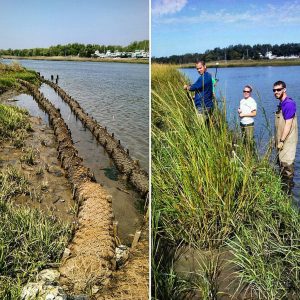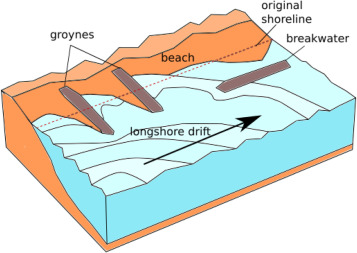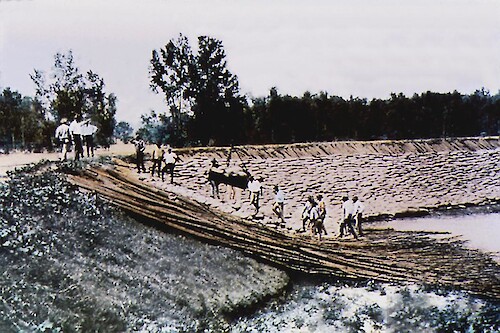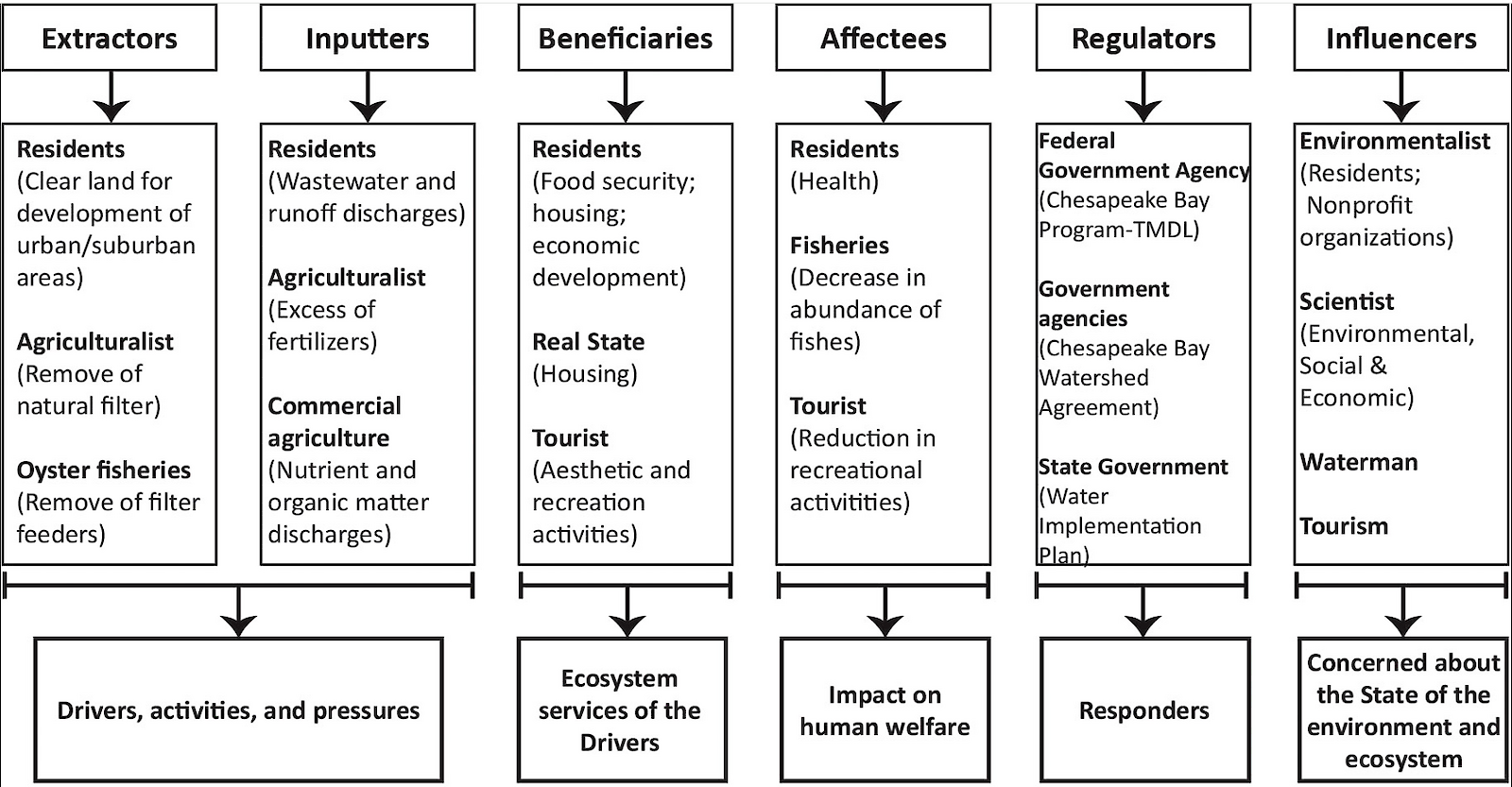Diversity in Environmental Management Strategies found in the Chesapeake Bay Watershed
Samantha Jalkowski ·The Chesapeake Bay supports habitat for many different species, recreation, and the economy. Striped bass and blue crabs are the life of the Chesapeake. They attract tourists, recreational and commercial fishermen and are indicators of a healthy ecosystem. Shoreline erosion, sea level rise, and nutrient runoff are threats facing the Chesapeake Bay today. There are many different strategies to manage the Chesapeake Bay watershed. Poor water quality affects ecosystem health which impacts people's livelihoods and perception for the Chesapeake Bay. Water quality is very difficult for one state to control because the water quality in the Bay could be affected by any of the rivers and streams that enter the watershed. Collaboration between different state and federal officials, non-governmental organizations, and citizens.
A study conducted by Virginia Institute of Marine Science (VIMS) surveyed landowners along the water to understand how landowners decided to protect their land against erosion. 726 landowners gave input on how they modified their land.1 69% of the people modified their land to protect against erosion and sea level rise and 31% didn’t do any modification due to cost or they said erosion and sea level rise wasn’t an issue. The majority of those who modified their land were permanent residents. Modifications include a mix of groynes, breakwaters, (Image 2) living shoreline (Image 1), and revetments (Image 3). Landowners who used living shorelines, groynes, and breakwater seemed to care more about the way they protected the property and the environment.1


Erosion, sea level rise, and nutrient runoff are key indicators used to compare estuaries. The Kennebec estuary, Maine has similar concerns to the Chesapeake Bay concerning land use around the water. The Kennebec estuary is one of the largest estuaries in Maine and is greatly affected by climate change. Both estuaries have a strong presence of migratory birds, eelgrass beds, and diverse bottom habitat that supports many industries and species. Hurricane Agnes in 1972 devastated the eelgrass bed and although it may not have been a hurricane the Kennebec estuary also faces poor nutrient and dissolved oxygen conditions. These conditions make it very difficult for plants or animals to survive because this can cause a barren area that is unproductive. When the clean water act was finalized both estuaries started their cleanup efforts and dissolved oxygen has improved in both Bays.

There are similarities and differences when compared to the Chesapeake Bay. Currently, in efforts to clean up the Kennebec estuary, non-governmental organizations and the state of Maine have been acquiring land around the estuary. The Chesapeake Bay would struggle with this strategy because there are many towns, cities, and farms that are found along the coastline. One major difference is that the removal of dams lead to increases in certain fish populations in the Kennebec estuary. These removals made the Kennebec estuary a more productive ecosystem. Dams were not as prevalent in the Chesapeake as they are in Maine. This issue of dams impeding migratory fish species is not one of the biggest issues in the Chesapeake Bay, making this type of issue unique to the Kennebec estuary. Not all estuaries are the same and any management strategy governments might use might not work in other places. This is why research, citizen input, and stakeholders are important in addressing problems and developing solutions.
New development of land around the water can greatly impact the shoreline. Land with Impervious surfaces, like urban environments, and agriculture are two important land usages to monitor closely. Impervious surface runoff brings all the chemicals from roads and trash from people into the water and agriculture runoff can increase nitrogen and phosphorus inputs from the fertilizer they use for planting. Studies have shown an increase in nutrient runoff which can harm the estuary plant life, animals, and water quality. There are many different strategies people use to protect against shoreline erosion. Most modification decisions are influenced by the cost of installation. State and federal governments encourage land preservation by creating sanctuaries, reserves, and wildlife management areas. This prevents developers from modifying the coastline.
Executive Order 13508, released in 2010, acknowledges the complexity and scope of protecting and restoring the Chesapeake Bay watershed using adaptive management.3 Collaboration between state and local government, non-governmental organizations, and citizens is essential to effectively protect and restore the Chesapeake Bay. The Chesapeake Bay is not the largest watershed in the United States, but it is the largest estuary in the eastern United States making it difficult to compare to other management strategies of other estuaries and watersheds. The complexity of the Bay and how everyone is connected can be difficult to grasp. Diagram 3 demonstrates a basic understanding of how citizens can benefit, affect, and regulate their connection to the Bay.

Partnerships and stakeholder involvement is the only way to effectively manage all the threats the Bay faces. Participation in developing the best management plan could include sharing knowledge or data, educating citizens, working on future legislation, and developing programs or practices.2,5 The Bay will always be changing. An adaptive management strategy is the only way to keep up with new threats and growing concerns. One new research topic that has some growing concerns in the Bay is PFAS (polyfluoroalkyl substances). PFAS is a forever chemical that never degrades and can be found in soils, animals, and humans. At some levels they can be toxic to humans and animals. Some studies at the University of Maryland have shown the presence of PFAS in fish and crabs that we eat, but levels now are not dangerous enough for humans. Every day scientists find new problems, collect more data on existing threats, and the next step is for stakeholders to get together and determine the best way to adapt and manage.
- EPA. Chesapeake Bay Watershed Agreement (2014) Retrieved March 27, 2024. https://www.epa.gov/sites/default/files/2016-01/documents/attachment1chesapeakebaywatershedagreement.pdf
- Leyva Ollivier, M. E., Newton, A., & Kelsey, H. (2023). Socio-ecological analysis of the eutrophication in Chesapeake Bay, USA. Frontiers in Marine Science, 10. https://doi.org/10.3389/fmars.2023.1237493
- Living Shorelines—Virginia Association of Soil and Water Conservation Districts. (2017). https://vaswcd.org/living-shorelines/
- Simple Search | NSCEP | US EPA. (n.d.). Retrieved March 27, 2024, from https://nepis.epa.gov/Exe/ZyNET.EXE?ZyActionL=Register&User=anonymous&Password=anonymous&Client=EPA&Init=1
- Stafford, S., & Guthrie, A. G. (2020). What Drives Property Owners to Modify Their Shorelines? A Case Study of Gloucester County, Virginia. Wetlands, 40(6), 1739–1750. https://doi.org/10.1007/s13157-020-01358-6
- Summaries. (n.d.). Virginia Institute of Marine Science. Retrieved March 27, 2024, from https://www.vims.edu/ccrm/research/climate_change/adaptation/nsf-2/summaries/
- Ryzhakov, P., Hermosilla, F., Ubach, P.-A., & Oñate, E. (2022). Adaptive breakwaters with inflatable elements for coastal protection. Preliminary numerical estimation of their performance. Ocean Engineering, 251, 110818. https://doi.org/10.1016/j.oceaneng.2022.110818
About the author
Samantha Jalkowski

Currently, I am a second year master’s student at University of Maryland Eastern Shore. I am a part of the Marine Environmental Estuarine Science program studying ecological systems. In 2020, I graduated with a B.S in Marine Biology from Unity College, ME. My master’s research is examining Saltwater intrusion’s effect on loblolly pine wood density and morphology. As I work to complete my degree I have also been interning with USGS ecological patterns and Process team. After school I hope to work with the government in better understanding changes to marine ecosystems and help develop management strategies.
Next Post > CERF Conference in Portland Oregon
Comments
-
Meghna 2 years ago
Nice job on this blog! I like how you mentioned that not all estuaries are the same that the management strategy governments take cannot be used just anywhere. This is important to note because we can clearly see that no place is the same. There's only one of each and just because one strategy and policy is working in a particular region, it doesn't mean that same tactic will work some place else because there are many things to consider. Because of this, I agree that research, citizen input, and stakeholders are equally as important in addressing these kinds of problems and are crucial in developing solutions.
-
Toni Zais 2 years ago
Good post, Sam! It's so interesting to the ways that NGOs and other citizen scientists are getting involved in estuary protection. Some of the methods are unexpected to me because, like you pointed out, many of these solutions wouldn't be feasible in the Chesapeake Bay. This is a great example of how scale can effect the complexity and feasibility of different managing strategies.
-
Gage Jacobs 2 years ago
Great post. It does a good job of highlighting just how complex management of these big resources can get. There are so many factors that make an ecosystem like the bay difficult to fully understand.
-
COLIN SCOTT VISSERING 2 years ago
Sam - you've done a nice job highlighting an issue within your blog that I think makes it challenging to implement environmental solutions on and around the Chesapeake Bay - private land ownership. If the government owns or manages land it is fundamentally much easier to identify and implement measures to improve ecosystem health. Private landowners on the water (and I'm guilty myself) tend to worry about their lawn, their view, their dock, and their access to the water above the environmental conditions that they could have a hand in improving.
-
Joy Amadi 2 years ago
Given the interconnectedness of waterbodies, it is evident that a single state cannot effectively address concerns related to water quality; instead, multiple states must work together to address this intricate environmental issue.

